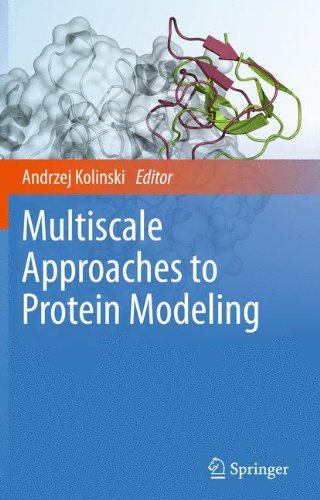

Most ebook files are in PDF format, so you can easily read them using various software such as Foxit Reader or directly on the Google Chrome browser.
Some ebook files are released by publishers in other formats such as .awz, .mobi, .epub, .fb2, etc. You may need to install specific software to read these formats on mobile/PC, such as Calibre.
Please read the tutorial at this link: https://ebookbell.com/faq
We offer FREE conversion to the popular formats you request; however, this may take some time. Therefore, right after payment, please email us, and we will try to provide the service as quickly as possible.
For some exceptional file formats or broken links (if any), please refrain from opening any disputes. Instead, email us first, and we will try to assist within a maximum of 6 hours.
EbookBell Team

4.1
20 reviewsMultiscale Approaches to Protein Modeling is a comprehensive review of the most advanced multiscale methods for protein structure prediction, computational studies of protein dynamics, folding mechanisms and macromolecular interactions. The approaches span a wide range of the levels of coarse-grained representations, various sampling techniques and variety of applications to biomedical and biophysical problems. Thanks to enormous progress in sequencing of genomic data, we presently know millions of protein sequences. At the same time, the number of experimentally solved protein structures is much smaller, ca. 60,000. This is because of the large cost of structure determination. Thus, theoretical, in silico, prediction of protein structures and dynamics is essential for understanding the molecular basis of drug action, metabolic and signaling pathways in living cells, designing new technologies in the life science and material sciences. Unfortunately, a “brute force” approach remains impractical. Folding of a typical protein (in vivo or in vitro) takes milliseconds to minutes, while state-of-the-art all-atom molecular mechanics simulations of protein systems can cover only a time period range of nanosecond to microseconds. This is the reason for the enormous progress in development of various mutiscale modeling techniques, applied to protein structure prediction, modeling of protein dynamics and folding pathways, in silico protein engineering, model-aided interpretation of experimental data, modeling of macromolecular assemblies and theoretical studies of protein thermodynamics. Coarse-graining of the proteins’ conformational space is a common feature of all these approaches, although the details and the underlying physical models span a very broad spectrum.